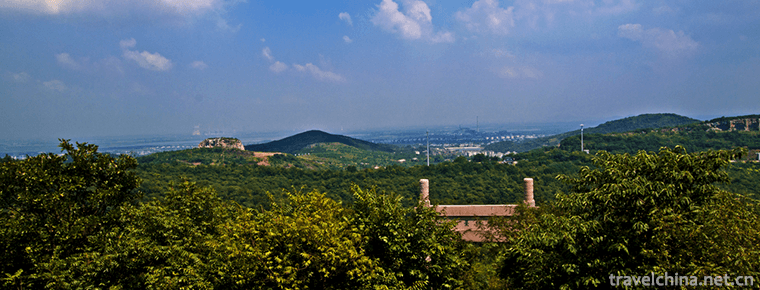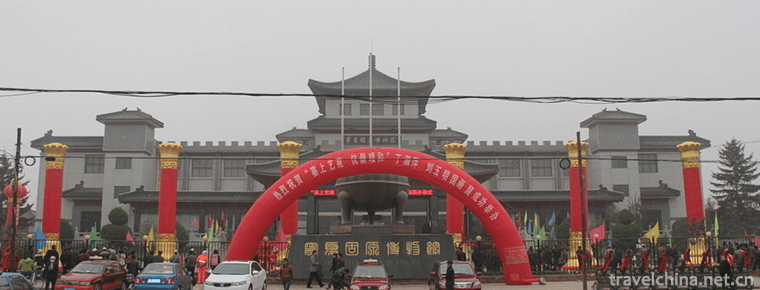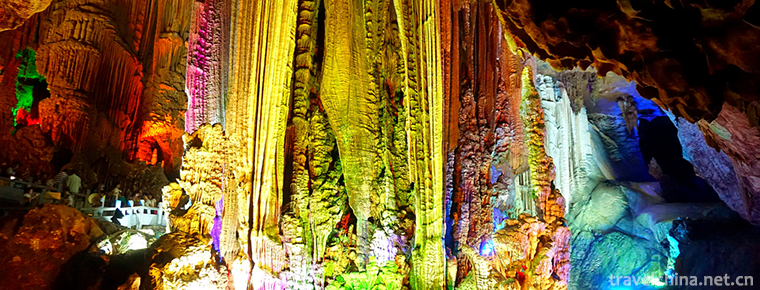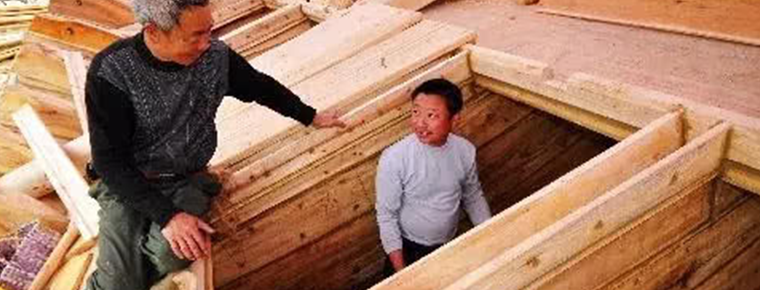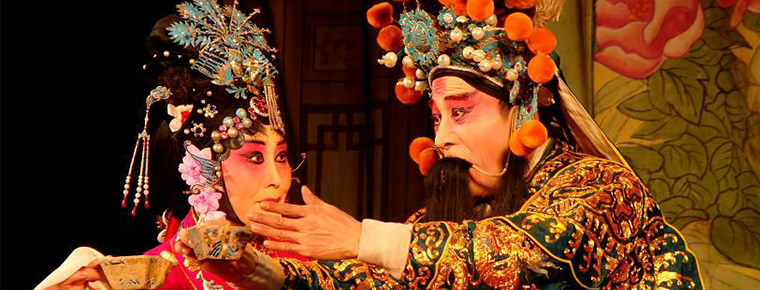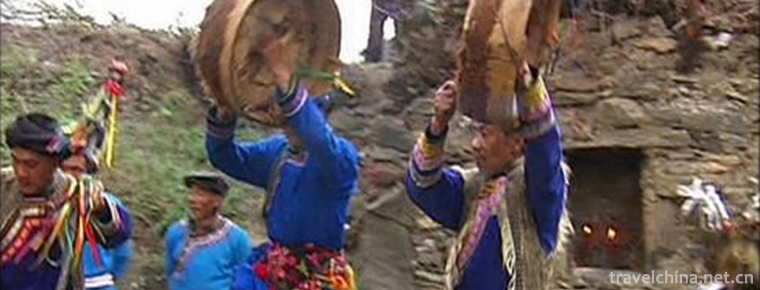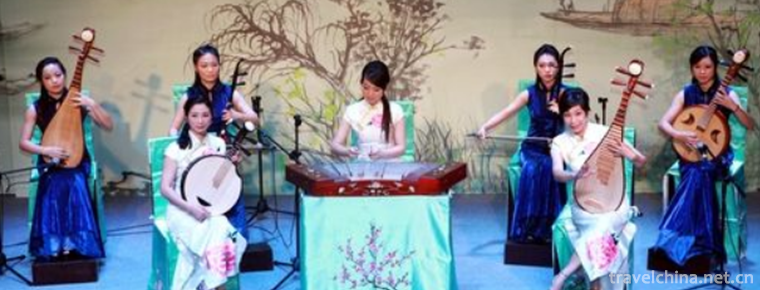Guangfu Ancient City Scenic AreaHandan City Hebei Province
Yongnian Guangfu City, also known as Yongnian City , Guangfu Ancient City , Ancient City , Guangfu City , Shuicheng , Taiji City , Shuicheng , is located in the southeast of Hebei Province, Handan City, northeast 45 Huali Fuyang River Yongnian depression, 25 kilometers away from the county government's residence. Because it was once the governing Office of Guangping Prefecture in history, it is called Guangzhou Prefecture. Now it is a key cultural relic protection unit in Hebei Province.
Guangfu City has a history of more than 2600 years. At the end of Sui Dynasty, Dou Jiande, king of Xia Dynasty, and Liu Heilu, king of Hanzhong Dynasty, built their capitals here and later became the prefectures, prefectures, prefectures and county administrations of successive dynasties. There are magnificent and simple ancient city walls; a dignified and beautiful Hongji Bridge with unique structure, known as the "sister bridge" of Zhaozhou Bridge; a maosui tomb that has experienced storms and attracted people to explore; a well-laid and well-constructed Xiba Gate, a Ming water conservancy facility still serving agricultural production; and a water conservancy facility built in the Sui and Tang Dynasties. Period, Tibetan caves for strategic defense, etc.
The existing city wall was rebuilt in the Ming Dynasty. It was 12 meters high and 8 meters wide. The area of the city was 1.5 square kilometers. The wall is basically intact, with a total perimeter of nine miles and thirteen steps.
Guangfu Ancient City is also a water city, surrounded by 10,000 mu of depression and endless reeds, surrounded by water, with a rare beautiful scenery of water countryside in the north. Around the ancient city is a smooth moat. Outside the moat is a Yongnian depression with an area of 46,000 mu. Its topography is high in the north and low in the south. Its water energy flows freely and it accumulates water all the year round. It is a famous natural aquaculture farm in history. Artificial multiplication and release of crucian carp, river shrimp and river crab will be carried out in deep water areas such as Yongnian Walaotan Lake and Moat River. Aquatic plants such as reed, lotus root and scutellaria will be cultivated in shallow water areas of Wadian Lake. Guangfu Old City will reproduce the beautiful scenery of Shuicheng.
It is also the birthplace of Yang-style and Wushu-style Taijiquan. It is a famous city that integrates ancient city, Shuicheng city and Taiji city. These characteristics can not be compared with those of other ancient cities. The former residences of Yang Lu Chan, the founder of Yang-style Taijiquan, and Wu Yuxiang, the founder of Wu-style Taijiquan, are well preserved.
The ancient city wall of Guangfu is not only large-scale and magnificent, but also well preserved.
The history of this ancient city wall can be traced back to the Tang Dynasty. However, in the Tang Dynasty, the Tucheng Wall took shape. In the Jiajing Period of the Ming Dynasty, brick cities were built and four urns were added, that is, scale. The walls are square, which is rare in the history of ancient Chinese cities. The moat of the ancient city, with a width of 140 meters, is also very rare.
At present, the city wall was rebuilt in the Ming Dynasty. It is 12 meters high and 8 meters wide. The area of the city is 1.5 square kilometers. The wall is basically intact, with a total perimeter of nine miles and thirteen steps. In the Ming Dynasty, there were four urns and four gates. On each gate, there were gate towers and four corner towers. There are twenty-six pavilions on the wall and 1,572 mounds. Outside the moat, willows are planted on both sides of the city. Four suspension bridges connect inside and outside to form a solid castle. The ancient city is 4.5 kilometers in circumference, 10 meters in height and 8 meters in thickness. It covers an area of 1.5 square kilometers and distributes over 30 streets.
This ancient city was built outside the four gates of east, west, South and north, namely, the outer city. Because there are gate towers on the gate of Urn City, this city has the name of four gates and eight floors. Now only the East Gate and the West Gate have Urn City, and neither the City Gate Tower nor the Corner Tower exist. In China, such well-preserved ancient cities are rare.
The ancient city of Guangfu is situated in the center of Yongnian depression, one of the three major depressions in Hebei Province with an area of 46,000 mu, surrounded by a moat of 5 kilometers around the city wall of Guangfu. Wadian has an average land surface of 41 meters above sea level. It has accumulated water for many years, and its water quality is excellent. The scenes of reeds flourishing, fish and shrimp symbiosis, blue water, wind and lotus, wild goose and bird singing are praised as "the small south of the North River" and "the second Baiyangdian Lake". In the past, the scenery is still the same, and new scenery is added: 800 mu Taiji Labyrinth, 10,000 Mu lotus garden, 1,000 Mu wetland forest, 300 mu Taiji Lake and 10,000 Mu reed marsh together, enriching the beauty of Shuicheng.
The water network around the ancient city is vertical and horizontal, lakes and ponds are densely distributed, and there are many kinds of aquatic plants. There are many reed marshes and lotus lakes around the ancient city. Lotus lakes are still rare in the north. Every summer, thousands of mu of lotus ponds compete for beauty and beauty. The reed marshes meander like a labyrinth of waterways like a "dragon".
The climate in Guangping prefecture has typical characteristics of temperate semi-humid continental monsoon climate: distinct seasons, mild climate, abundant sunshine, hot and rainy season, drought in the same period, the annual prevailing wind direction is South wind. Because it is located in the southern margin of North China Plain and surrounded by Yongnian depression, the geographical environment landscape of plain wetland is obvious. The existing water surface in the depression is mostly natural wetlands such as artificial fish ponds, reed swamps and lotus lakes.
Guangfu Ancient City, with a long history, is the birthplace of Yang and Wushu Taijiquan. The ancient city of Guangfu has historically been the governing house of Quliang County, Guangping County, Wu'an County, Guangnian County, Yongnian County, Huanzhou, Guangping Road and Guangping Government. Chenghe River is vast, low-lying, surrounded by water, easy to defend and difficult to attack, for all generations of soldiers must contend for a place. The original Tucheng was built into a brick city in the Ming Dynasty, which was basically well preserved. Historically, the ancient city wall of Guangfu, as a military defense facility of the traditional Chinese city, has preserved or remains in its urn, corner tower, horse road, gate hole, Jack gate and gate tower. It is a perfect embodiment of the construction technology and layout of the ancient city wall in China. It has important architectural historic value and aesthetic appreciation value. It is also an ancient city in China. Wall remains occupy an important historical position.
The Spring and Autumn Period has been the Hou State of Quliang, then Tucheng, with a history of 2600 years. During the Qin and Han Dynasties, they were the capital of Pinggan and Guangping, and the county governments of Quliang and Guangnian counties.
In the Northern and Southern Dynasties, Emperor Wenxuan Tianbao of the Northern Qi Dynasty changed prefectures, counties and counties in 553. Guangping County changed to Meizhou. In seven years (556), Quliang County merged into Guangnian County. However, Guangnian County was transformed into Quliang City, which is now the ancient city of Guangfu.
The first year of Sui Renshou (601) was changed from Guangnian to Yongnian because of avoiding the name of Yang Guang, Emperor Yangdi of Sui Dynasty, so this city is also called Yongnian City. In the late Sui Dynasty, Dou Jiande, the famous leader of the peasant rebellion army, built his capital here and called him King Xia. At this time, the city began to take shape. The Yuan Dynasty expanded the area of the city pool. Yongnian City was originally Tucheng without water. During the Chenghua period of the Ming Dynasty, Zhifu Li entered Kaichi to divert water, excavated the moat and brought in the water of Fuyang River.
The ancient city of Guangfu was formerly Tucheng, with an area of sixteen miles and thirteen steps. The Yuan Dynasty increased to nineteen miles and thirteen steps. In the twenty-first year of Jiajing in the Ming Dynasty (1542), Chen Li, the Zhifu of Guangping Prefecture, mobilized nine counties of migrant workers. It lasted thirteen years and built Tucheng into a brick city. Four gates were built with towers, four corners were built with corner towers and 876 stacked walls, especially outside the four gates. There are still Wengcheng guarded by each other, and the authentic customs are deeply locked, solid as gold soup.
In the first year of the Republic of China (1912), the county residence was cut down, and in June of the second year of the Republic of China (1913), the county government was abolished and occupied the old government office. After the Lugouqiao Incident in 1937, it was once occupied by Japanese aggressors. The county government moved to occupy the old government office. Chengguan Town was established in 1950. In 1958, the county town was moved from Guangfu City to Linhuangguan. In 1961, it was changed to Chengguan Commune. It was changed to Chengguan District in 1963. In 1968, the district was withdrawn and the office was changed. Chengguan Town was restored in 1984. In January 1988, it was renamed Guangfu Town. old government office. After the Lugouqiao Incident in 1937, it was once occupied by Japanese aggressors. During the War of Liberation, Guangfu City became the last liberated town in the North China Plain because it was easy to defend and difficult to attack.
Beautiful ancient city, history has attracted countless dignitaries, literati linger forget to return. Tang poet Li Bai and Qing painter Zheng Banqiao have left many poems and paintings. In particular, in the middle of the Qing Dynasty, Governor Fang Guanzhi passed by to control locusts to put grain on the road, and the Lotus Pavilion overlooked the ancient city. He wrote an impromptu poem: "Rice brings thousands of ridges of reeds to the bank, which is full of loads of wind." Quliang City is fragrant as the sea, and the first day of the building is near the east. To put the shadows of the boat outside, it will be set in a bed of dew light. The curtain exhausted all the gas, Qingxing gull fish have temporary same. This poem is a true portrayal of the ancient city scenery.
Guangfu has a long history and has long been the political center in southern Hebei. Celebrities of all dynasties have emerged in large numbers, including calligraphy, medicine, poetry, strategy, divination and so on. Mao Sui, known for his courage and strategy, is comparable to Zhuge Liang's frustration in the overall situation of the world. Sima Shu, one of the ten great talents in the Tang Dynasty, Zhang Gai and Shen Hanguang, the three great talents in the south of Jilin Province, are among them.
At the same time, Guangfu is a rich soil of folk culture. Folk art and culture has a long history, profound implications and endless interests. Guangfu folk art is a rich and colorful form of art performance created by the broad masses of people in their work and life for thousands of years.
Many scenic spots
The ancient city has a long history and many scenic spots. There are more than 30 places of interest and historic sites inside and outside the city. There are four streets, eight streets and seventy-two lanes in the city, which are vertically and horizontally distributed in the former residences of Taiji Master Yang Luchan, Wu Yuxiang, Qinghui Academy, Chenghuang Temple, Wenchang Pavilion and other scenic spots. Outside the city, there are Hongji Bridge, Maosui Tomb, Heilongtan and other scenic spots. Hongji Bridge is one of the key cultural relics protection units in Hebei Province. Its shape and size are roughly the same as Zhaozhou Bridge. It is said that it was built by Lu Ban's sister and Lu Ban's competition. It can be called a sister bridge. Hongji Bridge is not only the main road of transportation between Hebei and Shandong provinces, but also an art bridge with high appreciation value. The reliefs on 34 fences and pillars are beautifully carved. Maoshang Peak (Maosui's mausoleum), a famous Warring State scholar, is the first of the eight well-known sceneries of ordinary cadres.
The old city of Yongnian Guangfu has more than 46,000 mu of depression. The Yongnian ancient city of Nine Miles and Thirteen Steps is located in the center of the depression. Shuiyuancheng Square, 10,000 mu of reed pond, is a rare southern-style town in northern China. Nevertheless, Yongnian Ancient City is well-known in the world, not only because it brings thousands of ridges of rice and ten miles of lotus fragrance, but also because of its nine miles and thirteen steps, four gates and four towers, and more because of its origin with Taijiquan.
Tai Chi Culture
Yang-style Tai Chi is relaxed and generous, while Wu-style Tai Chi is compact and compact. Both of the two styles are characterized by flexibility, rigidity and softness. They are called "living sculpture, flowing music, and white snow in sports". Yang-style and Wushu-style Taijiquan have a wide influence, and their disciples are all over the world. Yongnian was named "the hometown of Taijiquan" by the State Sports Commission. He has held eight consecutive international Taijiquan exchanges. Every session, there are more than 1000 Taijiquan fans and many Taijiquan factions to compete and exchange, which is a hot spot of tourism.
Guangfu was awarded the title of "China Taijiquan Research Center" and "Township of China Taijiquan" by the National Association of Folk Literature and Art Artists. Since 1991, the Taijiquan Exchange Conference in China, which was held in Guangfu as the core, has attracted more than ten fans from nearly 30 countries and regions to attend. Every year tens of thousands of Taijiquan fans from Hong Kong, Britain, the United States, Japan and other countries and regions come to the competition to watch and discuss their skills.






-
Bagong Mountain Tourist Scenic Area
Since 2001, Bagongshan Scenic Area has listed Bagongshan National Geopark, Bagongshan National Forest Park and Bagongshan National AAAA Tourist Area successively. Bagong Mountain is a famous historica.
Views: 139 Time 2018-12-23 -
Daqing Oilfield History Exhibition Hall
Daqing Oilfield History Exhibition Hall is the first original Memorial Hall in China with the theme of petroleum industry, and it is a cultural relic protection unit in Heilongjiang Province. .
Views: 155 Time 2019-01-07 -
Guyuan Museum
Guyuan Museum of Ningxia was established on December 30, 1983. It belongs to the Cultural Office of Ningxia Autonomous Region. It is located at No. 133 Xicheng Road, Guyuan City, southern mountain are.
Views: 193 Time 2019-01-12 -
Silver Cave
Yinzi karst cave is a typical karst landform, which runs through 12 peaks and belongs to floor-type karst cave. The cave contains stalactites developed in different geological ages.
Views: 128 Time 2019-03-04 -
Changqing Huayang Scenic Area
Huayang Scenic Area is a national AAAA-level tourist attraction, located in Huayang Town, Yangxian County, south of Qinling Mountains, 76 kilometers away from the county seat, with an average elevatio.
Views: 187 Time 2019-03-17 -
Traditional Wooden Ship Manufacturing Techniques
Fuyang has a long history of shipbuilding. As early as the Tang Dynasty, water transportation was glorious. Fuyang Lingqiao wooden boats are mainly distributed in towns along the Fuyang River, especia.
Views: 333 Time 2019-04-21 -
Huai tune Huai Diao
Huai Diao, also known as Huai Diao, also known as Zhanghe Old Diao, is one of the national intangible cultural heritage..
Views: 348 Time 2019-05-04 -
Qiang sheepskin drum
Sheepskin drum dance, known as "Monasha", "Moldasha" or "Buzila" in Qiang language, is a kind of sacrificial dance performed by "Shibi" in legal activities, als.
Views: 173 Time 2019-06-10 -
Shaoxing Pinghu Tune
Shaoxing Pinghu Diao, also known as "Yuejun Nanci", or "Shaoxing Pinghu Diao" for short, is a popular form of folk art in Shaoxing and its surrounding areas in Zhejiang Province. I.
Views: 152 Time 2019-06-14 -
Dragon elbow mountain
Longcub mountain, also known as yuxu mountain, is located in Longquan Township, northwest of Huili County, Liangshan Yi Autonomous Prefecture, Sichuan Province, China. It is also known as yuxu mountain at the junction of Baiguowan .
Views: 347 Time 2020-10-16 -
Honorary title of Mianyang
National system to promote comprehensive innovation reform pilot area.
Views: 331 Time 2020-12-14 -
Guangan location
Guang'an City is located in the east of Sichuan Province, with the geographical coordinates of 30 ° 01 ′ - 30 ° 52 ′ n, 105 ° 56 ′ - 107 ° 19 ′ e, 134.5 km from east to west, 93.6 km from north to south, from Linshui county to Dazhu County of Dazhou City, from.
Views: 359 Time 2020-12-19
